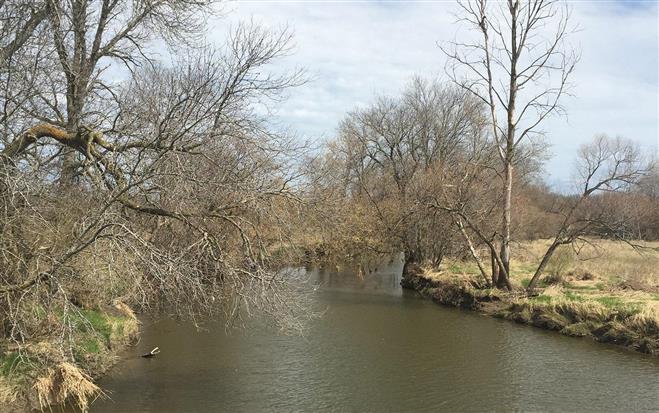Great Lakes states tighten spigot on Waukesha's water request

Great Lakes officials are further tightening the spigot on Waukesha's request for Lake Michigan water and recommending numerous conditions on distribution of the water and return of treated wastewater to the lake, a draft document says.
When representatives of eight U.S. states and two Canadian provinces meet Tuesday in Chicago, they will attempt to reach consensus on a lower volume of lake water that Waukesha would receive — no more than an average of 8.4 million gallons a day by midcentury — if the request is approved.
To make that work, Waukesha would have to follow through on a plan to reduce water use through conservation measures, said Dan Injerd, director of the Illinois Office of Water Resources.
Waukesha's current distribution area would need nearly 8.4 million gallons by 2050, according to city consultants who accounted for water conservation efforts.
Adding small pieces of two adjacent municipalities to a revised lake water service area still under review by the regional officials would require extra volume, Waukesha Water Utility General Manager Dan Duchniak said.
Duchniak has asked regional officials to consider an average of 8.76 million gallons a day for a future water service area.
Injerd described the difference of 360,000 gallons by midcentury as minimal and said 8.4 million gallons a day would accommodate the proposed distribution area if the conservation plan succeeds.
The state and provincial representatives plan to meet Tuesday and Wednesday in a final attempt to reach consensus on the city's request. The draft document summarizing their findings and the city's application are posted on a Waukesha project website established by the Conference of Great Lakes and St. Lawrence Governors and Premiers.
Waukesha has proposed buying lake water from Oak Creek, pumping it to Waukesha and returning treated wastewater to the Root River, a tributary of Lake Michigan. A 2008 federal law known as the Great Lakes protection compact requires the water to be returned to the lake.
At the conclusion of next week's meetings, the regional officials are expected to recommend whether the governors of the eight states, or their designees, should approve the request during a June 13 meeting in Chicago. A unanimous, affirmative vote of the eight states is required for approval.
Any recommendation to approve from the regional group would come with a long list of conditions to be discussed Tuesday. Among those conditions:
■For a minimum of 10 years, Waukesha must monitor water quality in the Root River to determine whether wastewater discharges harm the stream.
■The city must establish a comprehensive collection program targeting unused prescription medicines and personal care products that its customers might flush into sewers.
Pharmaceuticals are not fully removed in wastewater treatment, so this condition would reduce amounts of the pollutants returned to the lake, officials said.
■The city has to provide an annual report on the effectiveness of its water conservation efforts. The conservation plan must be updated at least every 10 years.
The regional group has not achieved consensus on a central element of Waukesha's plan: boundaries of the area to be served by lake water if the request is approved.
A straw vote of the officials during a May 2 conference call revealed a split over whether to further trim a lake water distribution area as redrawn by the group in April.
In a request forwarded to Great Lakes officials in January, Waukesha had asked to pump up to an average of 10.1 million gallons of lake water a day by 2050. City officials lowered the volume to 8.7 million gallons after regional officials moved to remove portions of three neighboring communities included in the original request.
Most of the Town of Waukesha, generally south of Lawnsdale Road, was taken out along with small portions of the towns of Genesee and Delafield.
Left on the service area map were Town of Waukesha islands completely surrounded by the city, border islands on the city's east edge isolated from the remainder of the town, and a handful of small pieces of the town mostly contained by the city and crossed by existing water mains.
A narrow slice of the City of Pewaukee south of I-94 also remains in the redrawn service area, under terms of a 1997 border agreement with Waukesha.
While most of the regional officials have said it would be reasonable to include those remaining pieces of adjacent communities in the plan, representatives of New York, Michigan, Quebec and Ontario want to consider lopping some off the map when they meet next week.
The Wisconsin Department of Natural Resources has not commented on whether the smaller water distribution area would conflict with state law requiring a municipality's water service area to match its sewer service area.
The DNR in December approved Waukesha's earlier request to distribute up to 10.1 million gallons a day by midcentury to the larger, original water service area map.
The DNR says Waukesha does not have an adequate supply of water that is fit to drink, due to radium contamination of deep groundwater supplies, and that all the city's options outside the Great Lakes basin would have adverse effects on wetlands, streams and inland lakes.













